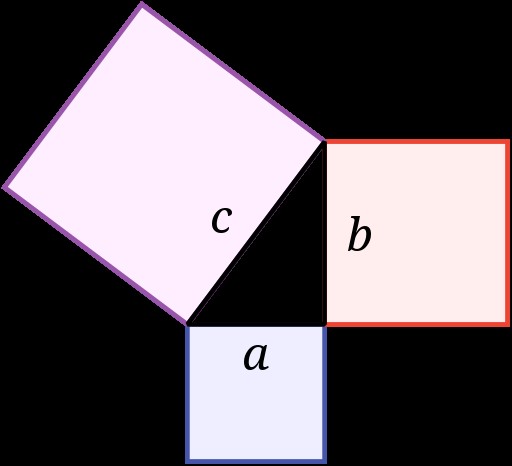Browse "Science & Technology"
-
Article
Magnetic Poles
Because it behaves like a magnetized sphere, Earth has 2 magnetic poles. They are located near, but not at, the geographic poles, which are on the axis of Earth's rotation. The north and south magnetic poles are the locations on Earth's surface where the planet's magnetic field points straight downwards (at the north magnetic pole) and upwards (at the south magnetic pole). Conventional compasses which move on a horizontal plane are useless near the magnetic poles. However, a magnetized needle free to swing vertically will dip downwards at the north magnetic pole and point straight up at the south magnetic pole. For this reason, the magnetic poles are also referred to as the "dip poles."
"https://d2ttikhf7xbzbs.cloudfront.net/media/media/53c26b08-3e98-4cb1-b146-fc3654a0854a.jpg" // resources/views/front/categories/view.blade.php
https://d2ttikhf7xbzbs.cloudfront.net/media/media/53c26b08-3e98-4cb1-b146-fc3654a0854a.jpg
-
Article
Malaria
Early settlers in Ontario experienced a disease called "fever and ague," which ravaged the first European settlements such as Newark [Niagara-on-the-Lake] and Cataraqui [Kingston].
"https://development.thecanadianencyclopedia.ca/images/tce_placeholder.jpg?v=e9dca980c9bdb3aa11e832e7ea94f5d9" // resources/views/front/categories/view.blade.php
https://development.thecanadianencyclopedia.ca/images/tce_placeholder.jpg?v=e9dca980c9bdb3aa11e832e7ea94f5d9
-
Macleans
Male and Female Brains
It began almost by accident. In an effort to uncover the causes of dyslexia, psychologist Sandra Witelson decided in 1970 to conduct an experiment involving dyslexic and other children at a Hamilton grade school. Because dyslexia affects mostly males, Witelson planned to use boys only.This article was originally published in Maclean's Magazine on January 22, 1996
"https://development.thecanadianencyclopedia.ca/images/tce_placeholder.jpg?v=e9dca980c9bdb3aa11e832e7ea94f5d9" // resources/views/front/categories/view.blade.php
https://development.thecanadianencyclopedia.ca/images/tce_placeholder.jpg?v=e9dca980c9bdb3aa11e832e7ea94f5d9
-
Article
Malpractice
Malpractice is intentional or negligent failure by any professional, eg, doctor, lawyer, accountant, to meet the standards of reasonable competence in his field. These standards are set taking into account the circumstances in which the professional is acting.
"https://development.thecanadianencyclopedia.ca/images/tce_placeholder.jpg?v=e9dca980c9bdb3aa11e832e7ea94f5d9" // resources/views/front/categories/view.blade.php
https://development.thecanadianencyclopedia.ca/images/tce_placeholder.jpg?v=e9dca980c9bdb3aa11e832e7ea94f5d9
-
Macleans
Managing Health Care a Challenge
FROM THE OUTSET it has embodied all the elements of a fine spectator sport: adaptable principles, skilled deception, bullying and emotional blackmail. Little wonder Canadians love their medicare.This article was originally published in Maclean's Magazine on December 9, 2002
"https://development.thecanadianencyclopedia.ca/images/tce_placeholder.jpg?v=e9dca980c9bdb3aa11e832e7ea94f5d9" // resources/views/front/categories/view.blade.php
https://development.thecanadianencyclopedia.ca/images/tce_placeholder.jpg?v=e9dca980c9bdb3aa11e832e7ea94f5d9
-
Article
Manufacturing in Canada
Manufacturing is a critical component of Canada’s economy. The production, sale and distribution of finished products contribute to consumer and labour markets, and secure Canada’s position as an economic leader among developed nations. Major, medium-sized and small manufacturers produce goods used by Canadians and contribute to the revenue gained from the export of goods to other countries. Since the early 2000s, the manufacturing sector in Canada has declined significantly in response to changes in the global economy and fewer regulatory controls over Canadian products (see Free Trade; Globalization). The composition and structure of the Canadian manufacturing industry is transitioning in response to these changes, aiming to produce new goods that are in greater demand.
"https://development.thecanadianencyclopedia.ca/images/tce_placeholder.jpg?v=e9dca980c9bdb3aa11e832e7ea94f5d9" // resources/views/front/categories/view.blade.php
https://development.thecanadianencyclopedia.ca/images/tce_placeholder.jpg?v=e9dca980c9bdb3aa11e832e7ea94f5d9
-
Article
Maritime Archaeology
British ColumbiaIn BC, most work has been carried out by the Underwater Archaeological Society of British Columbia (UASBC), a large, successful and mostly avocational group that was formed in 1975. The UASBC's has published seven regional shipwreck inventories.
"https://d2ttikhf7xbzbs.cloudfront.net/media/media/7ecaa63a-c7a6-4708-9151-98a099cb711d.jpg" // resources/views/front/categories/view.blade.php
https://d2ttikhf7xbzbs.cloudfront.net/media/media/7ecaa63a-c7a6-4708-9151-98a099cb711d.jpg
-
Article
Mary Celeste
Mary Celeste was a brigantine built in 1861 at Spencer's Island, Nova Scotia, and originally named Amazon. She was wrecked off Cape Breton in 1867, salvaged, sold and in 1868 registered at New York and renamed Mary Celeste. In 1872 she was found adrift off the Azores, with no sign of her crew.
"https://development.thecanadianencyclopedia.ca/images/tce_placeholder.jpg?v=e9dca980c9bdb3aa11e832e7ea94f5d9" // resources/views/front/categories/view.blade.php
https://development.thecanadianencyclopedia.ca/images/tce_placeholder.jpg?v=e9dca980c9bdb3aa11e832e7ea94f5d9
-
Article
Mathematics
Mathematics is the science of numbers and spatial relationships. It is customary to distinguish pure mathematics and applied mathematics. Pure mathematics can be divided roughly into three major fields: geometry and topology, algebra and arithmetic, and analysis. It is complemented by logic, which deals with sets, the basic mathematical objects, their axioms and rules of inference. This article provides background on mathematics. For more detailed information please see Applied Mathematics; History of Mathematics in Canada; Mathematics and Society.
"https://d2ttikhf7xbzbs.cloudfront.net/mathematics/pythagoreanproperty.jpg" // resources/views/front/categories/view.blade.php
https://d2ttikhf7xbzbs.cloudfront.net/mathematics/pythagoreanproperty.jpg
-
Article
Mathematics and Society
The involvement of a society in mathematics is determined by cultural and functional factors.
"https://development.thecanadianencyclopedia.ca/images/tce_placeholder.jpg?v=e9dca980c9bdb3aa11e832e7ea94f5d9" // resources/views/front/categories/view.blade.php
https://development.thecanadianencyclopedia.ca/images/tce_placeholder.jpg?v=e9dca980c9bdb3aa11e832e7ea94f5d9
-
Article
McKee Trophy
McKee Trophy, award given annually for contribution to the advancement of Canadian aviation. It was donated by J. Dalzell McKee, an American sportsman pilot, who completed the first flight of a seaplane across Canada in 1926.
"https://d2ttikhf7xbzbs.cloudfront.net/media/media/86bfe704-ba22-4038-9c9b-801e1866ba02.jpg" // resources/views/front/categories/view.blade.php
https://d2ttikhf7xbzbs.cloudfront.net/media/media/86bfe704-ba22-4038-9c9b-801e1866ba02.jpg
-
Article
Mechanical Engineering
Mechanical Engineering is a branch of ENGINEERING that deals with the design, construction and operation of machines.
"https://development.thecanadianencyclopedia.ca/images/tce_placeholder.jpg?v=e9dca980c9bdb3aa11e832e7ea94f5d9" // resources/views/front/categories/view.blade.php
https://development.thecanadianencyclopedia.ca/images/tce_placeholder.jpg?v=e9dca980c9bdb3aa11e832e7ea94f5d9
-
Article
Mechanical Instruments
Mechanical instruments (non-electronic). Machines designed to produce music mechanically, sometimes with an operator but without a performer and without the aid of a loudspeaker.
"https://development.thecanadianencyclopedia.ca/images/tce_placeholder.jpg?v=e9dca980c9bdb3aa11e832e7ea94f5d9" // resources/views/front/categories/view.blade.php
https://development.thecanadianencyclopedia.ca/images/tce_placeholder.jpg?v=e9dca980c9bdb3aa11e832e7ea94f5d9
-
Article
Media Bias in Canada
Bias means supporting or opposing something or someone in an unfair way, regardless of the evidence. Media bias is when information spread by media or a news outlet reflects the interests and biases of ownership or individuals of that media company. Corporations may have a clear bias for one political party or issue and may influence its media outlets to reflect that bias. Individual journalists or news outlets may favour one side of an issue and reflect that bias — consciously or unconsciously — in the way they cover stories. The fact that a majority of journalists in Canada are White can also lead to biased reporting on minority groups. People can overcome unconscious bias by thinking and talking about it, and especially by listening to people from less privileged backgrounds.
"https://d2ttikhf7xbzbs.cloudfront.net/media/new_article_images/MediaBias/dreamstime_xl_142501942.jpg" // resources/views/front/categories/view.blade.php
https://d2ttikhf7xbzbs.cloudfront.net/media/new_article_images/MediaBias/dreamstime_xl_142501942.jpg
-
Article
Media Convergence in Canada
Media convergence refers to the merging of previously distinct media technologies and platforms through digitization and computer networking. This is also known as technological convergence. Media convergence is also a business strategy whereby communications companies integrate their ownership of different media properties. This is also called media consolidation, media concentration or economic convergence. (See also Media Ownership.)
"https://development.thecanadianencyclopedia.ca/images/tce_placeholder.jpg?v=e9dca980c9bdb3aa11e832e7ea94f5d9" // resources/views/front/categories/view.blade.php
https://development.thecanadianencyclopedia.ca/images/tce_placeholder.jpg?v=e9dca980c9bdb3aa11e832e7ea94f5d9
